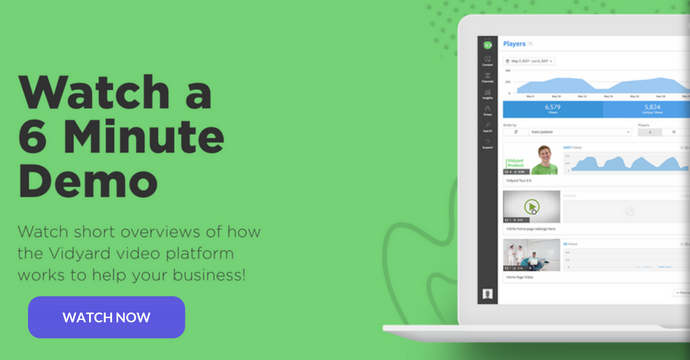Your mom was right: staying organized is critical to your success—and your video library is no different. In this blog post, we’ll take you through some of the content management strategies that we’ve put into practice in our own Vidyard marketing instance. Our organizing principle at Vidyard is video type. The two most important things to keep in mind are: Ease of use for your team Quality of analytics Organizing by video type makes the most sense for our team because it makes it really easy to find videos, which is critical when you have a library as big as ours. Here’s what our checklist looks like: Give your video a clear, descriptive title Write a short, 2-3 sentence description of the video Double check the video defaults to make sure they meet your needs Add any relevant calls-to-action (CTAs) Depending on your own needs, your checklist might look a little different. Make sure that you take time to train your team on your organization strategy so that everyone understands exactly what goes where and the steps they need to follow when they upload a video. We hope this post has given you some ideas for your own video library and has inspired you to get organized! Find More Discussions Share Share this discussion on Twitter Facebook Sort by Best Best Newest Oldest Start the discussion… in this conversation ⬇ Drag and drop your images here to upload them. Attach Log in with or sign up with Disqus or pick a name Disqus is a discussion network Disqus never moderates or censors. Load more comments Powered by Disqus Subscribe Add Disqus to your siteAdd DisqusAdd Disqus' Privacy PolicyPrivacy PolicyPrivacy SECURITY WARNING: Please treat the URL above as you would your password and do not share it with anyone.
Your mom was right: staying organized is critical to your success—and your video library is no different. In this blog post, we’ll take you through some of the content management strategies that we’ve put into practice in our own Vidyard marketing instance. Whether you’re looking to set up your shiny new video library for success or just get a better handle on your existing content, we hope you’ll find tips and best practices that will help.
Determine Categories
Before you take any action, it’s important to think strategically. Think about the video content you have or are planning to produce. What kinds of categories do they fall into? What kind of organizing principle would make the most sense for your business?
Our organizing principle at Vidyard is video type. For us, it made the most sense to group webinars with other webinars, product update videos with other product update videos, and so on. However, your needs might be different. Maybe it makes the most sense for you to group videos by their location (eg. website, social media, etc.) or by which teams are using them. The two most important things to keep in mind are:
- Ease of use for your team
- Quality of analytics
Organizing by video type makes the most sense for our team because it makes it really easy to find videos, which is critical when you have a library as big as ours. Additionally, organizing by type makes using our analytics a no-brainer. For instance, when we download a report on our on-demand webinars, we’re comparing like with like. We don’t need to sort anything or exclude certain types of videos. We’re able to easily see our top-performing on-demand webinars and benchmark our newer content accordingly.
Create Upload Processes
Once you’ve decided on the broader structure of your library, one of the most impactful things you can do to keep your video content in order is to create a video upload checklist. Having a checklist ensures that everyone on your team follows the same processes when uploading a video and that important but easily-forgotten tasks, like adding tags or custom attributes, don’t get neglected.
Here’s what…

COMMENTS